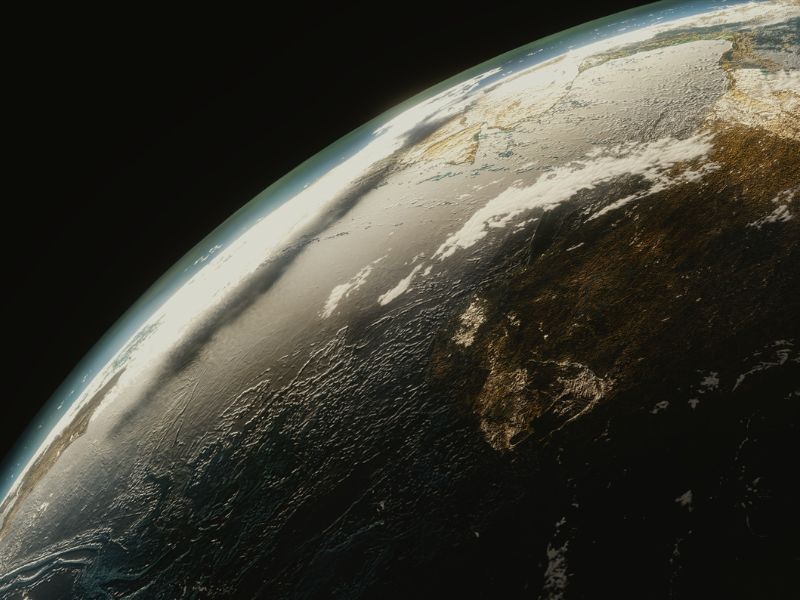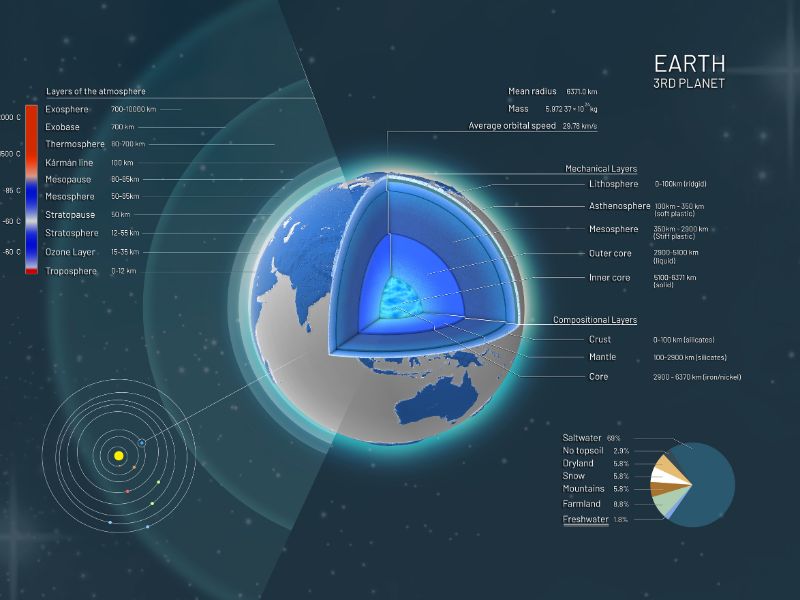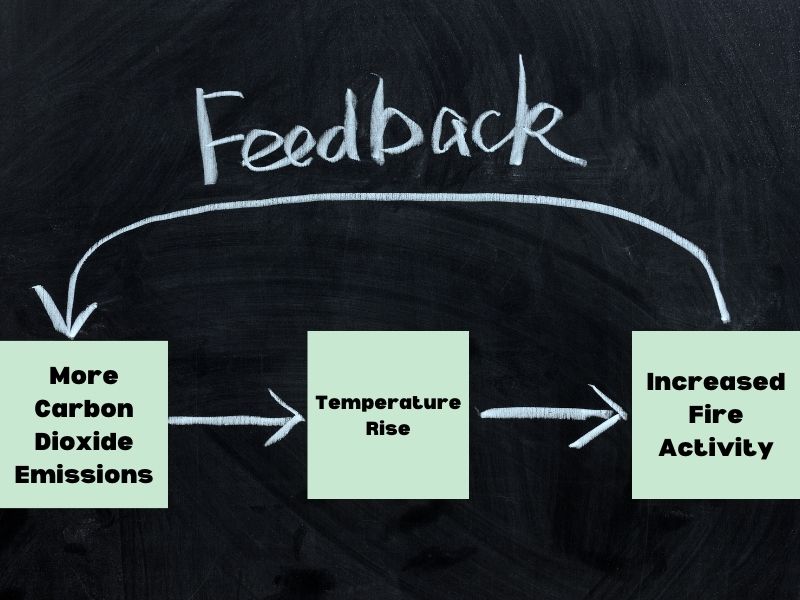
The temperatures we experience on the Earth’s surface are influenced by natural processes, such as variations in solar activity, volcanic eruptions, and Earth’s dynamic orbit around the sun. Other temperature-changing processes, though, are anthropogenic (human-caused), like aerosol spraying, fossil fuel burning, and landscape conversions. These changes are aspects of the global climate, and can happen slowly over millennia or more abruptly across decades.
The most influential climate warming processes are those that enhance the greenhouse effect. This is because the properties of Earth’s atmosphere determine how much radiation (heat energy) is kept inside the air, and how much radiation is kept out. For example, nearly all (97-99%) ultraviolet radiation is blocked out by the ozone molecules in the stratosphere, without ever making it to the troposphere layer closer to the ground.

Greenhouse gases accumulate in the troposphere. This layer is only about 12 meters above the surface of the Earth, it’s one of the lowest layers of the atmosphere. Greenhouse gases, including carbon dioxide (CO2), methane (CH4), nitrous oxide (N2O), ozone (O3), water vapor (H2O), chlorofluorocarbons (CFCs) make up less than 0.05 percent of all atmospheric gases and absorb and reradiate thermal energy that travels from the sun to Earth. Like a greenhouse, most of the Earth’s atmosphere is transparent to most of the light that comes from the sun. Some of that light is absorbed in the upper atmosphere from incoming solar light, and some of it is reflected back into space, but most of that incoming light is absorbed by the surface of Earth. Earth’s surface heats up and emits infrared light in return. Greenhouse gas molecules resonate with infrared radiation and begin to vibrate and bump into other air molecules, which distributes their infrared energy into the air as more heat.
These infrared-reactive molecules are only present in trace amounts but still make a considerable difference in weather and temperature. John C. Mutter, professor of Earth and Environmental Sciences and author of the 2020 book, “Climate Change Science” estimates that Earth would be roughly 16°C below zero without its blanket of greenhouse gases.
Global Climate Change Reasons
Present-day climate warming has been mainly caused by fossil fuel burning. This human-made process involves extracting oils, coal, and natural gas from the Earth’s crust, then burning them to produce heat energy which can power engines and spin turbines for electricity. Burning carbon-based substances (wood, coal, gasoline) releases carbon dioxide into the air where it tends to remain for hundreds of years. As carbon dioxide levels continue to rise, increasing amounts of heat become trapped in the atmosphere, i.e. climate warming.
Deforestation and land conversations like urbanization compound the problem of carbon dioxide emissions. When vegetation is cut down or burned, it loses its carbon-capturing capacity. Consequently, even less carbon is stored in trees, soils, and plants, resulting in higher overall carbon levels and further atmospheric warming. Heightened heat can trigger drier conditions which enables wildfires to start and spread. This type of self-reinforcing climate process is known as a feedback loop.

Climate Change Effects
Shifts in weather patterns are one of the most discernible consequences of climate warming, which is why climate change is sometimes called climate destabilization, because variations in weather-related events have become more unpredictable. Climate warming is augmenting the magnitude of sea level rise and the severity of coastal storms, droughts, record-setting heatwaves on land and in the ocean, river floods, extensive wildfires, and heavy precipitation. As stated by the 2021 Intergovernmental Panel on Climate Change (IPCC)’s Sixth Assessment Report, even relatively minor climate warming, say a 0.5°C increase, can cause statistically significant changes in both regional and global weather extremes.
Take, for example, extreme heat. Extreme heat can merely be defined as the highest temperatures compared to the average. As the climate warms, the frequency and intensity of extreme cold will almost certainly decrease while the frequency and intensity of heat extremes will increase. This means that the likelihood of warm spells and heat waves will also increase.
Or, take for example the impact that climate warming has on heavy precipitation. Wet seasons and precipitation events have intensified in many parts of the world because global temperatures are rising. Enhanced heat makes water evaporate and transpire into the atmosphere faster. Moisture-laden air will usually produce clouds and, eventually, more rainfall or snow.
Though climate warming is a complex phenomenon, I hope that some of its basic mechanisms have been covered above. To review, the climate is largely determined by the overall chemistry of the atmosphere. The atmospheric gases directly influence the heat and moisture we experience on the Earth’s surface. The greenhouse effect is the principal cause of global heating, and carbon dioxide is the most prominent contributor. Deforestation and vegetation clearing compound the problem of carbon dioxide emissions, and perpetuate reinforcing feedback. As long as the climate keeps warming, meteorological conditions will continue to change, and the weather will become more unpredictable.
Leave a Reply